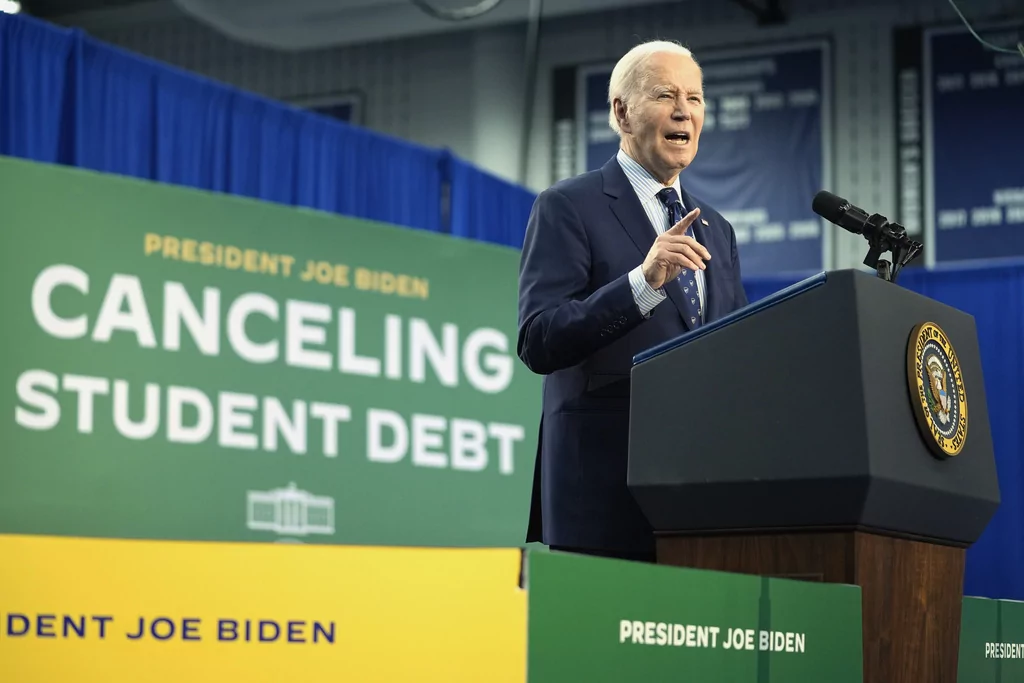

President Donald Trump is driving an even sharper contrast with his predecessor on student loans as he moves to garnish the wages of borrowers in default on their payments.
The Education Department took an explicit shot at former President Joe Biden over his “irresponsible” student loan policies on Monday, announcing it would begin collecting on defaulted payments after a five-year reprieve.
Since returning to the White House, Trump has taken preliminary steps to rein in those policies. In March, he narrowed who qualifies for a program Biden used to cancel billions in loans. But the Monday policy amounts to a sharper break and a win for conservatives who have spent years opposing Biden’s loan cancellation programs in court.
Repayment requirements that halted in March 2020 due to the COVID-19 pandemic will now resume for good on May 5.
“Going forward, the Department of Education, in conjunction with the Department of Treasury, will shepherd the student loan program responsibly and according to the law, which means helping borrowers return to repayment,” Secretary of Education Linda McMahon said in a press release, “both for the sake of their own financial health and our nation’s economic outlook.”
The decision to resume payments comes as Trump moves to shutter federal agencies, including the Education Department. Earlier this year, the president signed an executive order to begin transferring the government’s student loan portfolio over to the Small Business Administration.
It also reflects Trump’s latest attempt to dismantle the legacy of his predecessor. Upon taking office in January, Trump quickly reversed Biden-era policies on offshore drilling, electric vehicles, diversity initiatives, and more.
The administration has moved more slowly on student loans as the White House balances Trump’s 2024 promises with a policy that has sweeping consequences for millions of borrowers nationally. But the Education Department’s announcement is not surprising.
On the campaign trail, Trump called Biden’s policies a “vile attack” on the courts and blamed student loan cancellation for fueling the federal deficit.
Conservatives made that argument throughout Biden’s presidency, even winning a Supreme Court case against his student loan plans. But that didn’t stop Biden from writing off more than $175 billion in debt before leaving office.
It’s a different story now that Trump has returned to office.
More than 42 million people owe a collective $1.6 trillion in student loan debt, and many have complained that the process for entering repayment is confusing amid court battles and overlapping deadlines.
To allay those concerns, the Trump administration says it will embark on a “comprehensive communications and outreach campaign” to make sure people know how to return to repayment. It also blamed the Biden administration for keeping borrowers in a “confusing limbo.”
For Biden, canceling student loans was a campaign promise and one of the most aggressive policies he pursued while in office. He initially proposed writing off up to $20,000 per borrower, and when the high court struck down that plan, Biden used other tactics to forgive as much debt as possible during his term.
“The Supreme Court blocked it,” Biden said of his initial loans plan. “But that didn’t stop me.”
Biden also rolled out generous income-driven repayment plans that would see most borrowers repay less than they originally owed and some eligible for $0 monthly payments. That plan was also struck down in court earlier this year.
Trump has been much less vocal about student loans, largely eschewing the topic on the 2024 campaign trail in favor of issues like illegal immigration and tariffs. Still, it was widely expected that Trump would end the repayment pause he himself initiated back in March of 2020.
“Fewer than four out of 10 borrowers are in repayment,” White House press secretary Karoline Leavitt told reporters on Tuesday. “This is unsustainable, unfair, and a huge liability for American taxpayers. Debt cannot be wiped away. It just ends up getting transferred to others.”
Critics denounced the policy as poorly timed amid market turmoil over Trump’s tariffs, while budget hawks praised the decision as fiscally responsible and overdue.
“The [Trump] Administration is taking the right approach by beginning to restart repayments in earnest and conducting a creative and aggressive outreach strategy to make sure borrowers understand their obligations,” Committee for a Responsible Federal Budget president Maya MacGuineas said. “After years of false promises, we’re glad to see the government finally leveling with borrowers.”
The rift is not just financial, however, and reflects the differing constituencies of the Democratic and Republican parties in 2025. Former Vice President Kamala Harris won 55% of voters with a college degree during last fall’s election, per NBC exit polling, while Trump won among non-college graduates, including 67% of white non-college graduates.
The essential mystery of the Kilmar Abrego Garcia case
Those realities are reflected in the messaging of the Biden and Trump administrations, with the former emphasizing the loan-related hardships of voters who attended college, and the latter emphasizing the perceived unfairness of shifting debt from one group of voters to another.
“Why should Americans who didn’t go to college, or went to college and responsibly paid back their loans, pay for the student loans of other Americans?” Leavitt said. “The Trump administration will never force taxpayers to pay student loan debts that don’t belong to them.”



